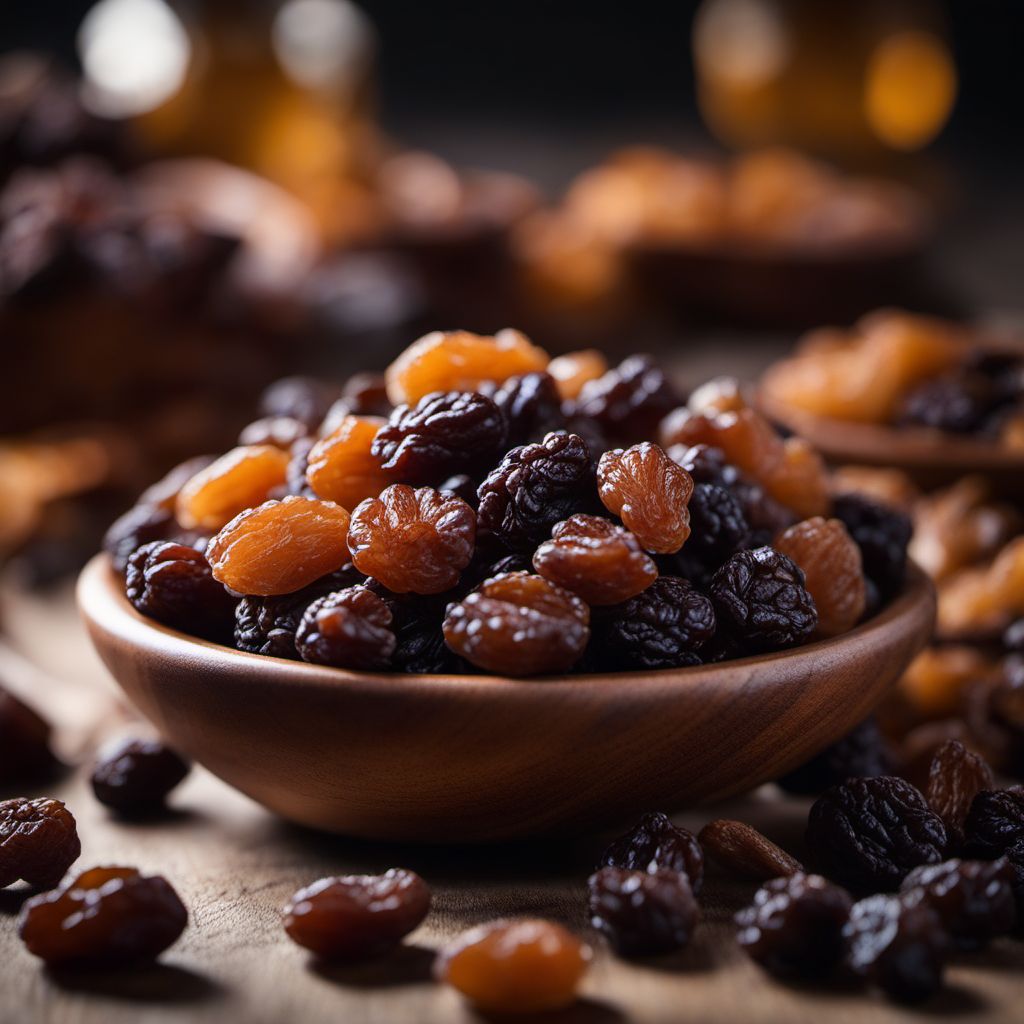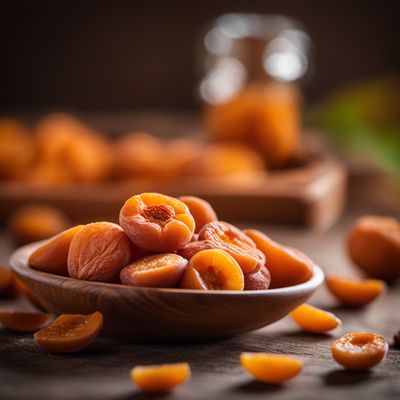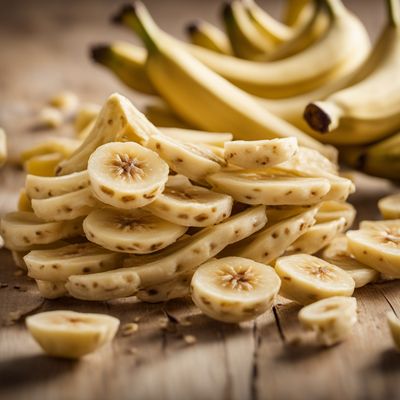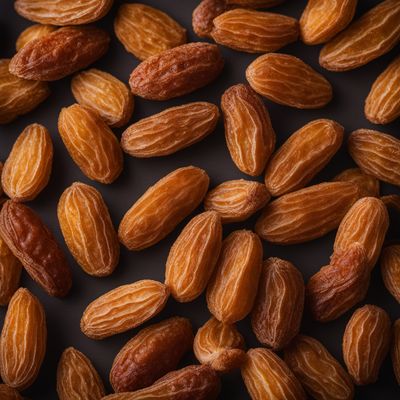
Ingredient
Dried vine fruits (raisins etc.)
Nature's Sweet Gems
Dried vine fruits, including raisins, currants, and sultanas, are made by drying grapes, resulting in a shriveled, yet intensely flavored fruit. They possess a naturally sweet taste with a chewy texture, making them a versatile ingredient in a wide range of culinary creations.
Origins and history
Dried vine fruits have a rich history dating back thousands of years, with evidence of their consumption found in ancient civilizations such as Egypt and Persia. They were highly valued for their long shelf life and concentrated sweetness, making them a valuable source of sustenance during long journeys and harsh winters. Today, dried vine fruits are enjoyed worldwide and are an essential ingredient in many traditional dishes and desserts.
Nutritional information
Dried vine fruits are a good source of dietary fiber, antioxidants, and essential minerals such as potassium and iron. They are also relatively low in calories, making them a healthier alternative to processed sweets.
Allergens
Dried vine fruits may contain sulfites, which can cause allergic reactions in some individuals, particularly those with asthma or sulfite sensitivity.
How to select
When selecting dried vine fruits, look for plump, moist, and evenly colored fruits. Avoid those that appear overly dry, hard, or discolored, as they may be old or of lower quality. Additionally, opt for organic or naturally dried varieties to avoid any added preservatives or sulfites.
Storage recommendations
To maintain the freshness and quality of dried vine fruits, store them in an airtight container in a cool, dark place, such as a pantry or cupboard. Avoid exposing them to moisture or direct sunlight, as this can cause them to spoil or lose their flavor.
How to produce
Dried vine fruits can be produced by drying grapes in the sun or using specialized drying techniques. Amateur gardeners can grow their own grapes and dry them at home by placing them in a well-ventilated area with ample sunlight or using a food dehydrator.
Preparation tips
Dried vine fruits can be enjoyed as a standalone snack, added to baked goods such as bread, cookies, and cakes, or incorporated into savory dishes like salads, stews, and tagines. They can also be rehydrated by soaking them in warm water or other liquids before use to restore their plumpness and juiciness.
Culinary uses
Dried vine fruits are commonly used in a variety of culinary applications, including baked goods, trail mixes, granola bars, chutneys, and stuffing. They add a natural sweetness and chewy texture to dishes, enhancing both the flavor and visual appeal.
Availability
Dried vine fruits are widely available in grocery stores, supermarkets, and specialty food stores worldwide. They are cultivated in many countries, including the United States, Turkey, Iran, Greece, and Australia.
More ingredients from this category

Dried apricots
The Golden Gems: Unveiling the Delights of Dried Apricots

Dried prunes
Nature's Sweet and Tangy Gems

Dried mangoes
The Sweet and Tangy Delight

Dried bananas
Nature's Sweet and Chewy Delight: Dried Bananas

Dried pears
The Sweet Essence of Preserved Pears

Mixed dried fruits
Nature's Sweet Medley: Exploring the World of Mixed Dried Fruits

Chocolate coated dried fruit
Decadent Delights: Chocolate Coated Dried Fruit

Dried apples
The Sweet Essence of Sun-Dried Apples

Dried dates
Nature's Sweet Gems

Fruit chips
Crispy Delights: Fruit Chips

Dried figs
Nature's Sweet Gems: Dried Figs
Recipes using Dried vine fruits (raisins etc.) » Browse all

Koledo - Croatian Christmas Bread
Festive Delight: Koledo - A Croatian Christmas Bread Recipe

North Indian Style Raisin Stuffed Quails
Quails Royale: A North Indian Delight with Raisin Filling

Panficato - Italian Christmas Fruit and Nut Bread
Festive Delight: Italian Panficato - A Decadent Blend of Fruits and Nuts

Methi Kishmish Delight
Savory Sweetness: Methi Kishmish Delight

Homemade Raisin Swirls
Delightful French Raisin Swirls: A Sweet Pastry Delight

Latin American Chinese Style Buccellato
Sweet and Savory Fusion: Latin American Chinese Style Buccellato

Sultsina - Finnish Cinnamon Raisin Bread
Heavenly Finnish Cinnamon Raisin Bread Delight

Belizean Coconut Sawine
Coconut Delight: A Belizean Twist on Sawine

Spicy Papaya Picadillo with a Twist
Fiery Fusion: A Spicy Twist on Papaya Picadillo

Floribbean Zelten Delight
Tropical Fusion: Floribbean Zelten Delight

Moroccan Spiced Chicken with Caramelized Onions and Raisins
Exotic Moroccan Chicken Delight

Saffron Buns
Golden Delights: Savor the Swedish Saffron Buns